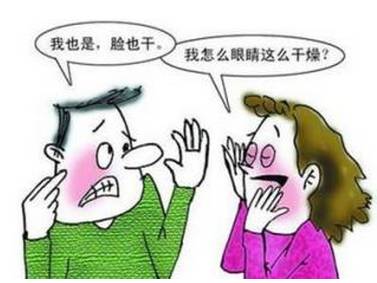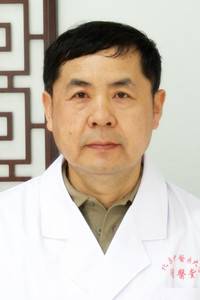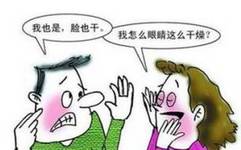Sjögren’s syndrome is a chronic inflammatory autoimmune disease primarily affecting the exocrine glands. Due to the immune inflammatory response mainly manifesting in the epithelial cells of the exocrine glands, patients typically present with dry mouth and dry eyes due to impaired function of the salivary and lacrimal glands. Additionally, other exocrine glands and organs outside the glands may also be affected, leading to multi-system damage symptoms. Patients often seek treatment primarily for dryness in the mouth and nose, and dry eyes. Given the long course of the disease, some patients may also experience depressive symptoms. Modern medicine suggests that the onset of Sjögren’s syndrome may be related to genetic, immune, and viral infection factors. Treatments for this condition mainly focus on symptomatic management, corticosteroids, immunosuppressants, and topical replacement therapies, which often have limited efficacy and significant side effects.

In TCM literature, there is no corresponding disease name for Sjögren’s syndrome; it is often categorized based on clinical manifestations as “dry syndrome,” “bi syndrome,” or “dry toxin.” In recent years, the National TCM Bi Disease Committee proposed the term “dry bi” to classify Sjögren’s syndrome under bi syndrome. I have reviewed literature on TCM treatments for Sjögren’s syndrome over the past decade: the classification often recognizes yin deficiency and dual deficiency of qi and yin as common understandings. In terms of treatment, the use of yin-nourishing herbs is predominant, with few approaches focusing on warming yang. Through over a decade of clinical practice, I have found that regardless of the stage of the disease, warming yang can be effectively incorporated into treatment, often leading to quicker clinical results than solely using yin-nourishing methods.

Patient Li XX, female, 61 years old. Chief complaint: reduced saliva in the mouth and dry eyes for over 2 years. Three years ago, she was hospitalized for a concussion, and after two weeks, her headaches and dizziness resolved, and she was discharged without significant discomfort or other illnesses. One year after discharge, she gradually noticed a lack of saliva, which worsened to the point where she had almost no saliva secretion, requiring her to drink water constantly to relieve thirst, and she needed to drink water to swallow food. Her eyes were dry, requiring eye drops every two hours to alleviate the dryness and pain. She consulted the rheumatology and immunology department of a local tertiary hospital, where tests showed positive anti-SSA antibodies, and salivary gland ECT indicated severely impaired salivary gland secretion function, leading to a diagnosis of Sjögren’s syndrome. She was prescribed hydroxychloroquine sulfate 0.2g twice daily, but after six months, there was no significant improvement in dry mouth and dry eyes, and she developed joint pain and fatigue. Over the two years of illness, she also consulted TCM and used various formulas such as Bu Zhong Yi Qi Tang (补中益气汤) for qi and yin nourishment, Liu Wei Di Huang Wan (六味地黄丸) for kidney yin tonification, and Xue Fu Zhu Yu Tang (血府逐瘀汤) for invigorating blood and resolving stasis, but with minimal symptom improvement. Upon examination, the patient appeared thin with dry skin and muscle atrophy, had dry and shriveled palms, joint pain, especially in the fingers and toes, dry eyes with burning sensations, and dry mouth with cracked lips. She could only eat porridge and had a pale tongue with a white coating and a weak pulse. Laboratory tests showed an erythrocyte sedimentation rate of 40mm/h, C-reactive protein of 2.2mg/dL, and rheumatoid factor of 256IU/mL. TCM diagnosis: dry bi (spleen and kidney yang deficiency type), Western diagnosis: Sjögren’s syndrome. Treatment focused on warming and tonifying the spleen and kidney, generating fluids and moistening dryness. A modified Guo Lou Qu Mai Wan (瓜蒌瞿麦丸) combined with Zeng Ye Tang (增液汤) was prescribed, one dose daily, taken in the morning and evening. Before starting the herbal treatment, the patient had already stopped the Western medication due to its ineffectiveness and significant side effects. After ten weeks of continuous treatment, the patient’s dry mouth and dry eyes had largely disappeared, joint pain was alleviated, and her erythrocyte sedimentation rate dropped to 10mm/h, C-reactive protein to 1.2mg/dL, and rheumatoid factor to 25IU/mL. Clinically, she was essentially cured.

From a clinical perspective, Sjögren’s syndrome primarily manifests as dry mouth and dry eyes. Based on the symptoms, it can be classified as liver and kidney yin deficiency or dual deficiency of qi and yin. However, in clinical practice, using only yin-nourishing methods for Sjögren’s syndrome sometimes yields poor results. At this point, according to TCM’s theory of mutual rooting of yin and yang, one should seek yin within yang. As Zhang Jingyue stated in the “Complete Works of Jingyue: New Formulas and Brief Notes: Supplementary Notes”: “Those who are good at nourishing yin must seek yin within yang, so that yin can rise with yang, and the source will not be exhausted.” Therefore, while nourishing essence, blood, and fluids, it is essential to supplement with yang-tonifying substances to achieve a balance of yin and yang. If yin essence is insufficient and only yin is nourished, the yin essence and fluids may stagnate the yang, leading to a lack of yang rising, resulting in the stagnation of yin essence and fluids, which can further exacerbate the deficiency of yin essence. Thus, the formula emphasizes the use of Fu Zi (附子) to warm the kidney and tonify yang, assisting the bladder’s qi transformation. With sufficient kidney yang, the bladder’s qi transformation can effectively distribute the yin essence and fluids retained in the lower jiao to the lungs, utilizing the lung’s dispersing function to alleviate dryness symptoms. The combination of Fu Ling (茯苓) for mild diuresis, Shan Yao (山药), Sheng Di (生地), Xuan Shen (玄参), Mai Dong (麦冬), and Shi Hu (石斛) for moistening dryness and relieving thirst ensures that fluids descend while nourishing the essence, leading to improved urination, alleviating thirst, and enhancing the function of Qu Mai (瞿麦) to promote urination without harming yin. Additionally, three types of insect medicines are included to leverage their penetrating and detoxifying properties to relieve joint pain. The combination of these herbs results in the elevation of yang and dispersal of yin, resolving dryness and toxicity, achieving satisfactory therapeutic effects.

Dr. Zhang Yinzhu
Consultation Time: Thursday afternoon
Title: Associate Professor, MD, Master’s Supervisor
Registration Fee:50 yuan
Expert Introduction:Clinically proficient in treating rheumatoid arthritis, rheumatic arthritis, degenerative joint disease, sarcoidosis, urticaria, psoriasis, coronary heart disease, diabetes, superficial gastritis, atrophic gastritis, liver cirrhosis, fatty liver, hepatitis B, chronic pharyngitis, acne, ulcerative colitis, allergic colitis, cholecystitis, cholecystitis, chronic nephritis, nephrotic syndrome, lupus erythematosus, dermatomyositis, Sjögren’s syndrome, and more with good efficacy.


